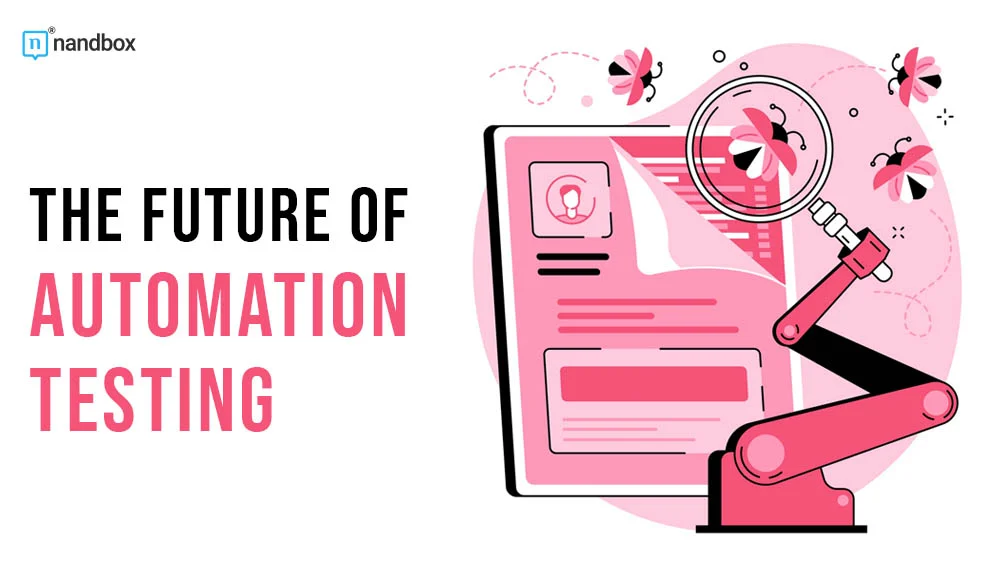In the world of software testing, testing tools keep improving and acquiring new capabilities thanks to modern technological advancements. Manual testing, which was once the primary testing method, has moved over and has been replaced by more efficient and faster automation testing techniques. In the realm of personal health tech, automation is advancing rapidly, much like in other industries. A great example is a tdee calculator app that efficiently estimates daily energy expenditure using automated algorithms, showcasing how automation can personalize and enhance user interactions in health-focused applications.
Automation testing has become the mainstay of software development, enabling firms to deliver applications on time and cost-effectively. As per Truelist, 24% of organizations saw an increase in ROI after adopting automation testing. More firms are relying on test automation as it ensures greater test coverage and accuracy, enhancing software quality and helping them maintain user satisfaction.
Automation testing is the software testing technique that automates the process of verifying a software’s functionality and ensuring it meets all requirements before its release. As technology advances, the future of automation testing looks more promising than ever. We need to accept the fact that techniques used today may no longer be employed a few years from now. They will be replaced by methods that are more productive and efficient than the ones used at present. This article will examine the trends that will influence the future of automation testing and analyze their impact on the software development industry.
Prominent Technologies That Will Shape The Future of Automation Testing
The following testing methodologies are already making a significant impact and will redefine the automation testing industry in the coming years:
Scriptless test automation
More businesses will be seen implementing scriptless testing for their applications due to the wide range of benefits it provides compared to script-based testing. Even though it has certain advantages, script-based testing has many drawbacks.
Creating test scripts requires the knowledge and skills of programmers. In addition, the process of writing scripts is time-consuming, and there is also the difficulty of reusing test cases for other projects. Contrarily, the scriptless process decreases the time and effort needed to maintain quality and streamlines the challenging test automation process.
Scriptless testing offers several benefits over script-based testing:
- Provides greater flexibility in reusing test cases for different scenarios
- Requires less effort to set up the testing process and begin testing
- Can be performed without programming knowledge
- Scriptless tools often come with third-party integrations like management tools that enhance the testing experience
- Dashboards are simpler, and reporting features are often better in scriptless tools
Cloud-based testing
Automation testing based on the cloud has gained a lot of popularity due to its low cost and scalability. Earlier, organizations had no option but to install physical infrastructure if they wanted to test their applications across multiple devices and platforms. Maintaining and updating these devices frequently can be challenging and expensive.
With cloud-based testing, firms have been able to overcome all these limitations. In the future, most organizations are expected to move their test automation to cloud-based platforms due to the benefits they offer.
Advantages cloud-based testing provides to testers and developers:
- Provides the option of adding or removing infrastructure as per your evolving needs
- Remote access 24/7 to the infrastructure of testing teams
- No additional maintenance expenses are needed for software or hardware
- Reduces the time needed for setting up the infrastructure and helps you begin test automation quickly
- It enables testing across several locations and time zones
AI and ML technology
Like in every other sector, we are witnessing a revolution in the software industry due to the introduction of AI automation tools. AI and ML technology enable testing tools to learn from previous test runs, recognize trends, and leverage the information to take efficiency and accuracy to greater levels.
Let us look at the benefits that AI tools bring to the table:
- AI tools can quickly scan log files and code in seconds and identify flaws in less time than conventional automation tools
- With the testing duration being reduced due to AI, the release frequency of software increases
- AI technology can help testers identify frequent code errors that could potentially prevent a system from functioning seamlessly
- It can be used to run challenging regression tests
- Facilitates enhanced test coverage, enhancing the application’s overall quality
Continuous testing
With software release cycles shortening in this increasingly fast development environment, organizations are resorting to DevOps practices to keep up. In this context, continuous testing plays a significant role, as it helps boost the DevOps pipeline by allowing testing at all stages of the SDLC. It removes the obstacles that come from performing testing in a single step.
Benefits of continuous testing include:
- As testing happens continuously, it enables proactive, real-time fixes to code and quality issues
- Since testing is done at every stage, it provides more opportunities to identify vulnerabilities in the application
- It facilitates the delivery of higher-quality software faster to the market
- It saves the time and effort of developers
- It ensures teams receive instant feedback and helps in quickly mitigating potential risks
- It helps team members learn more about their products and take steps to improve quality and reliability
In-sprint automation
Another trend seen in many organizations is the implementation of in-sprint automation. It is a process where you leverage automation for end-to-end testing, covering stages like test case planning, creation, execution, and reporting, all in a single print.
Here are the key takeaways of adopting in-sprint automation:
- Prevents automation backlog as you can run all tests in parallel with software development
- It facilitates shift-left testing, moving tests earlier in the development pipeline, and enhances the speed, accuracy, and coverage of tests
- Since tests are aligned with development, the overall time taken for testing is reduced, leading to quicker releases
- Facilitates collaboration between different teams involved in the testing process
Conclusion
Evidently, automation testing is the future of software testing, as it helps ensure that the applications function well and provide an exceptional user experience. As software applications become more complex, organizations will increasingly use newer, scriptless testing technologies based on AI and ML. However, while AI will enhance automation testing to improve efficiency and accuracy, it will not completely replace manual testing.
Businesses will need to keep up with the changing trends and adapt their testing processes if they intend to remain in the competition. Ultimately, the success of any testing project will depend on the testing platform that an organization leverages. For most companies,
TestGrid remains the first-choice test automation platform for most organizations because of its reliability, efficiency, superior speed, and cost-effectiveness. The codeless automation testing platform, with its AI-powered capabilities, enables companies to turbocharge their test automation in ways that other platforms cannot match. It simplifies the complexities of the testing process with its user-friendly interface and features. TestGrid’s AI algorithms save around 60% of the time taken to create test cases compared to conventional methods.
It enables early bug identification, resulting in significant cost savings and preventing expensive bug fixes that may have resulted from post-production issues. The low-code, AI/ML-powered platform is ideal for organizations focused on delivering software products quickly to the market without sacrificing quality.





